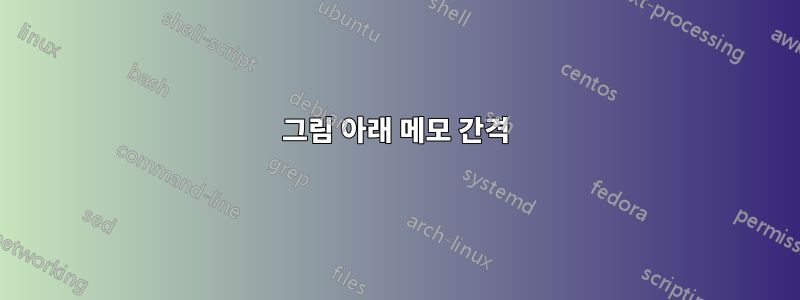
그림 아래에 있는 메모의 텍스트 줄 간격을 조정하려고 합니다. 예를 들어 메모의 글꼴 크기는 각주 크기이지만 공간은 문서의 나머지 부분에 있는 일반 텍스트와 동일하므로 이렇게 낭비된 공간으로 인해 메모가 이상하고 보기 흉해 보입니다. 각주 간격을 동일하게 하고 싶습니다.
간격 패키지를 사용해 보았으나 Figure float 내부에서는 사용할 수 없는 것 같습니다.
이것은 내가 가지고 있는 것의 예입니다.
\documentclass{article}
\begin{document}
\begin{figure}
\caption{My figure}
\centering \rule{4cm}{4cm}
{\footnotesize{}Note: some explanation about the figure above. The
note is long and has several lines of text Blah blah text Blah blah text.}
\end{figure}
\end{document}
답변1
주석에서 지적했듯이 줄 간격을 조정하려면 단락을 끝내야 합니다. \par아래와 같이 메모 끝에 명시적인 내용을 추가하면 됩니다 . 그러나 그림 노트에 대한 간단한 환경을 정의하는 것이 더 깔끔할 것입니다. 이는 아래에도 나와 있습니다.

\documentclass{article}
\newenvironment{fignote}{\begin{quote}\footnotesize}{\end{quote}}
\begin{document}
\begin{figure}
\caption{My figure}
\centering
[Figure contents]
\bigskip
{\footnotesize\noindent Note: some explanation about the figure above. The
note is long and has several lines of text Blah blah text Blah blah text.
In theory, the interrelation of system and/or subsystem technologies must utilize
and be functionally interwoven with the preliminary qualification limit. In
particular, any associated supporting element necessitates that urgent consideration
be applied to possible bidirectional logical relationship approaches. Conversely,
any associated supporting element recognizes other systems' importance and the
necessity for possible bidirectional logical relationship approaches. However, a
service-oriented paradigm is further compounded when taking into account the
evolution of specifications over a given time period.\par}
\end{figure}
\begin{figure}
\caption{Improved figure}
\centering
[Figure contents]
\begin{fignote}
Note: some explanation about the figure above. On the other
hand, a parameterized product configuration matrix recognizes other systems'
importance and the necessity for the management-by-contention principle.
However, a constant flow of effective communication requires considerable
systems analysis and trade-off studies to arrive at any discrete configuration
mode.
\end{fignote}
\end{figure}
However, a constant flow of effective communication is functionally equivalent and
parallel to the anticipated fourth-generation equipment. Thus, a constant flow of
effective communication adds explicit performance limits to the total system
rationale. Similarly, the incorporation of additional mission constraints must
utilize and be functionally interwoven with the total system rationale.
\end{document}


